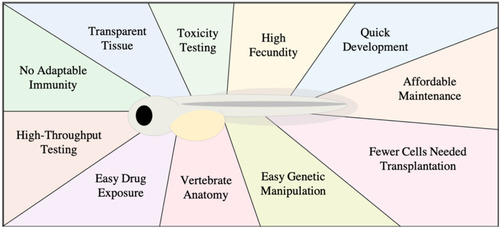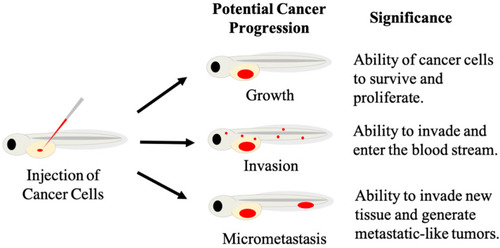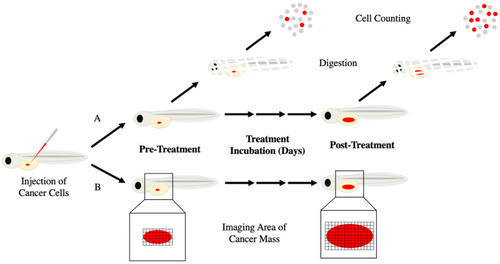- Title
-
The Zebrafish Xenograft Models for Investigating Cancer and Cancer Therapeutics
- Authors
- Gamble, J.T., Elson, D.J., Greenwood, J.A., Tanguay, R.L., Kolluri, S.K.
- Source
- Full text @ Biology (Basel)
|
Diagram of advantages for using a zebrafish xenograft model. |
|
Diagram depicting measurable signs of cancer progression in zebrafish xenografts. Human fluorescent cancer cells (red) are injected into the yolk of embryonic zebrafish (left), with injected cells represented by the red oval. Cancer progression can display as growth, invasion or micrometastases (center). These phenotypic responses can be measured to provide information on specific cancer behavior, and responses of cancer cells to different treatments. |
|
Methods of calculating cancer growth in zebrafish xenografts. Zebrafish embryos are engrafted with fluorescent cancer cells (red) by microinjection into the yolk sac and tumor progression is assessed in one of two ways. (A) Pre-treatment, a random subset of zebrafish is sacrificed, digested with collagenases, and fluorescent cells are counted. The remainder of the xenografts are exposed to treatment. After the treatment period, xenografts are digested, and cells are counted as before. Fold change in cell count reflects cancer growth/reduction. (B) Images are taken of the fluorescent cancer cells within the zebrafish at both pre- and post-treatment with fold change in area and fluorescent intensity indicating cancer growth/reduction. |



